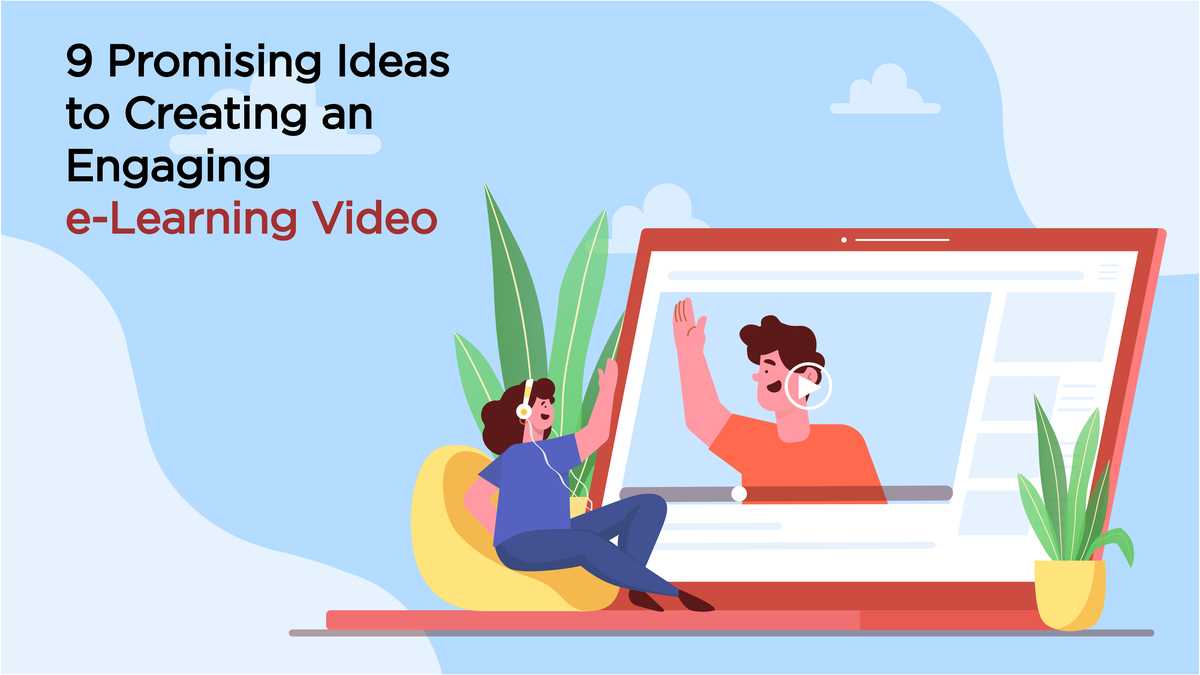Studying from home used to be such a foreign concept. Back then, studying meant going to school in the same way that working meant going to the office. People couldn’t wrap their heads around the idea of doing these things at home back then. As years passed, and as technology began to evolve, opportunities for doing these tasks from the comfort of our home became possible. Albeit hesitant in the beginning, people slowly began to welcome the idea. From then on, more people explored possibilities in studying from home (e-Learning).
While studying from home sounds like a walk in the park, for some people, that’s not the case. Sure, it’s fun to study without having to leave the bed, but things can get pretty boring at times. Once boredom sinks in, one can easily opt-out of attending classes, thus defeating the purpose of e-Learning.
So how can we make e-Learning more fun and less boring?
By adding videos to the process. These moving images are an excellent way to make the online classroom fun and engaging. Of course, learning can’t be all fun, that’s why it’s important to find just the right balance when using music and visuals for the e-Leaning video.
The process can be quite tricky, that’s why we have listed down some tips to help you:
#1 KISS (Keep it Simple Stupid)
We tend to lose track of time when we’re creating videos, so this can be quite a challenge. One way to go about this would be to put yourself in the shoes of the viewer. If the video is too long, they might get bored out of their minds, but if the video is too short, you might fail to discuss all the important points that need to be discussed.
Instead of going for the thirty-minute video, we suggest breaking it down into bite-sized chips that are a lot easier to digest. By doing this, you allow your learners to feel that they accomplished something after watching your e-Learning video.
#2 Reduce the Video Size (Make it easily downloadable)
One reason why e-Learners, especially the ones with slow internet connections, skip watching videos is that sometimes it takes forever to download a single clip. The long wait can be agonizing, especially when you’re pressed for time. To avoid this, compress the videos so they can easily be downloaded and viewed even on mobile devices.
#3 Foster an Interactive Learning Experience
This is where the animation comes into play. Use animations when introducing topics and concepts to your learners to make it easy for them to visualize what’s being discussed. You can use different animation techniques to make your content come alive. One such animation technique is used in BYJU’S learning app. Their videos and e-learning techniques make them one of the most loved school learning apps.
So remember that – when you create an interactive learning experience for your learner, you let the topic live in them. Okay, that sounded a bit too dramatic, but that simply means giving them a chance to experience the lesson fully. It’s not just the intellectual part of them that’s involved in learning; the emotional and physical parts of them are involved as well.
#4 Invest in Video Creation and Editing Software
There’s no way to go about it: you have to invest in high-quality software for video editing. This doesn’t mean that you should empty your wallet since you can buy high-quality editing software at low costs. You can use this software to transform raw clips into videos for e-Learning that motivate, engage, and inspire. What more you need is making your video “stand out from others” so invest in video optimization, design thumbnails, use end screens to make your videos more interactive.
#5 Use Voice-over to Evoke Emotions

Videos and e-Learning go hand-in-hand that’s why it’s essential to keep the learners interested no matter how boring the topic is. You can use your voice to add emotions to the video. In a way, this humanizes the process thus making them feel that they’re still talking to an actual person, instead of just watching and listening to moving images on a mobile device.
You can use voice-overs to spice things up a bit and make the experience more fun for your learners. It may not seem much, but this plays a huge role especially when it comes to topics that are too technical or, for some, boring.
Quality of audio plays a major role in enhancing better e-learning experience, it is inevitable to invest in good audio recording equipment to keep users attention to the education session. Without investing a lot of money in buying and configuring these gears, we can use affordable audio equipment that is easily available online
#6 Interactive Story-telling
When we were young, we would beg our parents and grandparents to tell us a story. Our eyes would light up as they open their mouths to share tales about lands far and near. That’s the same experience that we want the learners to have when they watch the videos. No matter technical or serious the topic may seem, you need to create the video as if it were a story longing to be told.

Interactive storytelling incorporates the user to take action based on the video sessions. The entire flow of e-learning courses is dependent on the decisions taken by the user at each level of the video.
Deloitte has done an amazing job in creating an interactive video for hiring new interns.
You can also add characters or make the user as a character in the video. Each character can have their own personality, but they should also be able to connect with the users on an emotional level. Include their backstories so those watching the videos can learn from them and develop a deeper appreciation for them.
# 7 Incorporate Online Training Activities
The only way for learners to have a deep understanding of complex subjects is by showing applications and examples. Without this, the concepts, topics, and theories will be deduced to videos they watched at some point in their life. Learners, especially the kinaesthetic type of learner, need to have hands-on experience so they can relate to the subject. This also helps them put everything in the right context.
#8 Dare to Ask
In addition to adding opportunities for the application of theories, you can also squeeze in questions in between discussion. These will prompt the learners to process what has been discussed in a critical way, as opposed to just being passive while watching the whole thing. Open-ended questions are preferred over recall questions since these are more engaging. It also invites learners to share different perspectives.
#9 Innovate and Collaborate
You can reach out to them through Skype and record the call, or have them send a video of them discussing the matter. You can add this to your video so your learners don’t have to listen to you all the time. The more instructors there are, the better.
In summary, adding the human element to the e-Learning video is what makes it engaging. Learners want to feel that they’re still talking to an actual person, even if the only thing that’s in front of them is their laptop or mobile device. Because as we all know nothing beats establishing personal connections.






